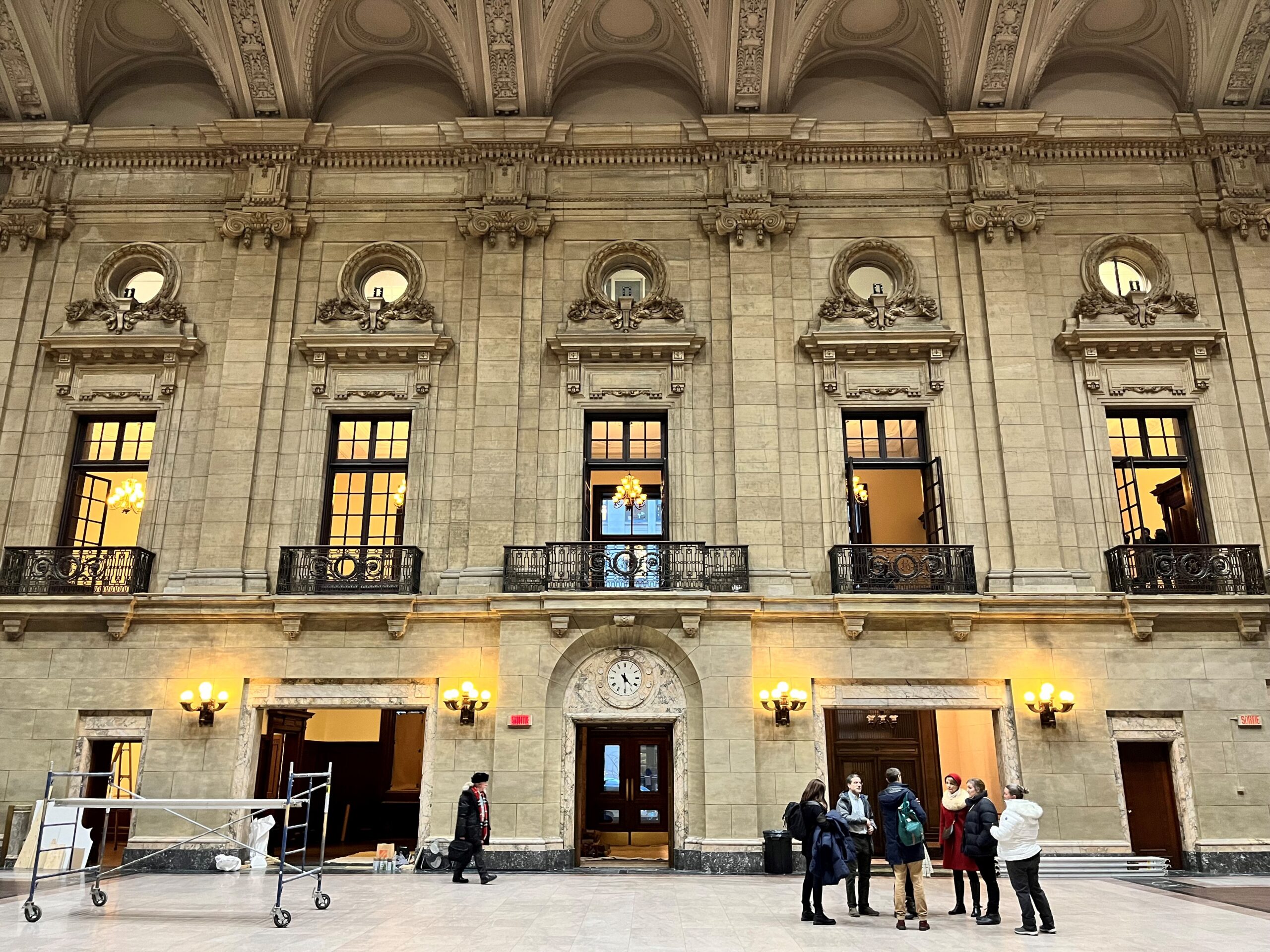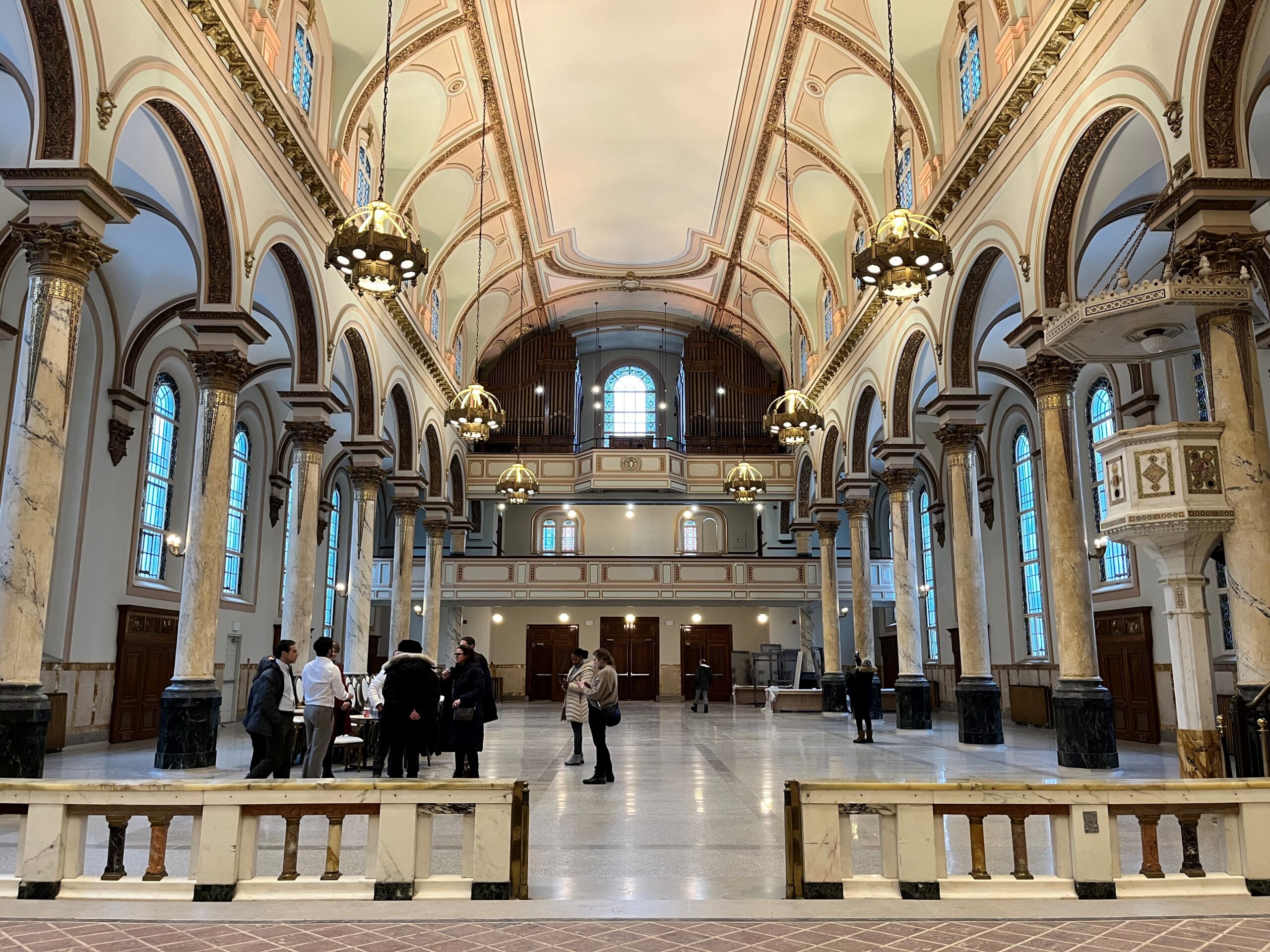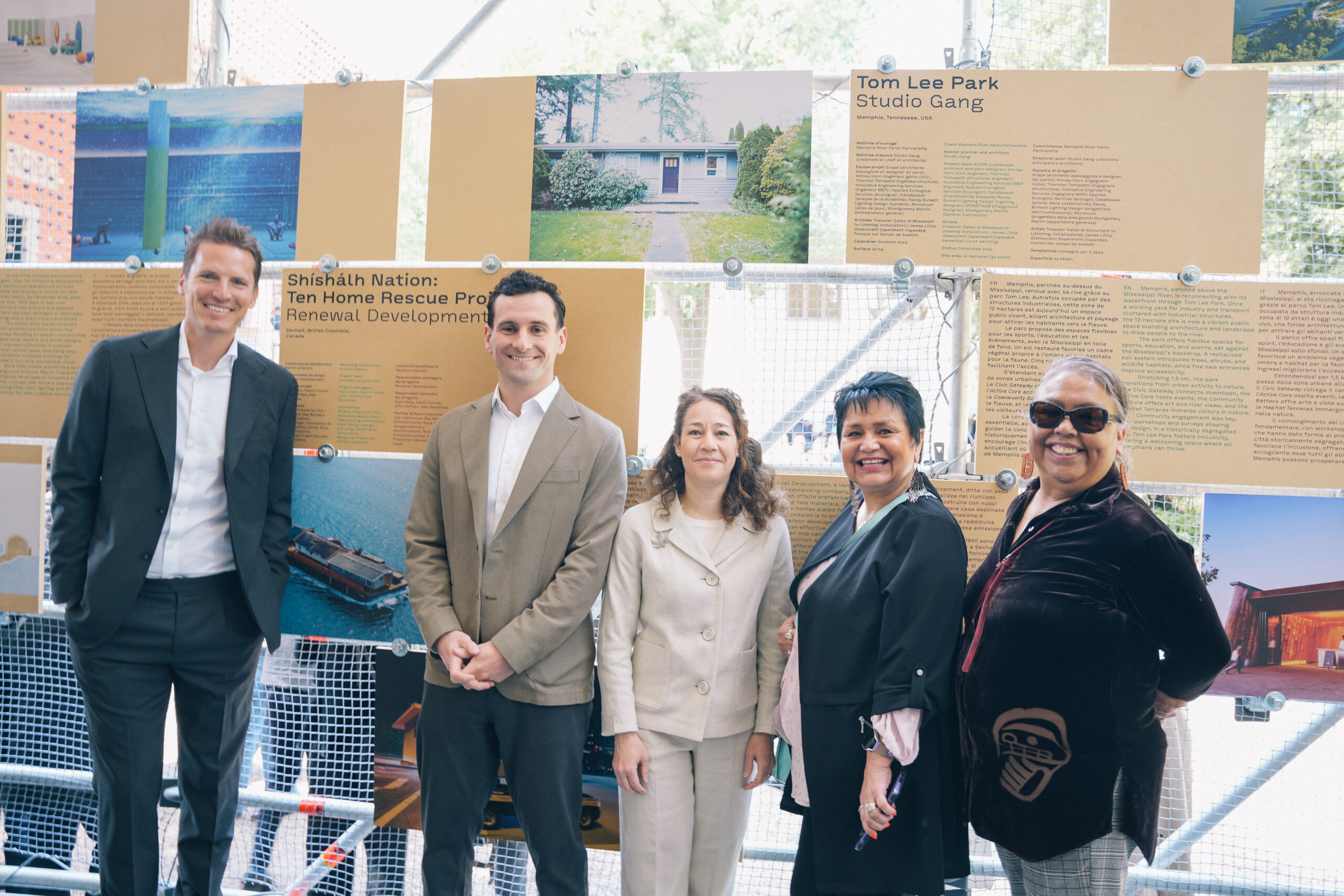Change Agents: Canada’s New Wave of “Heritage” Developers
Heritage projects take less time than demolition and building new, involve less risk, and have a good return on investment.
Do these ideas surprise you? They might, because they run counter to the drumbeat of conventional ideas circulating in the Canadian media. In fact, heritage-led projects are profitable, and there is a rising generation of entrepreneurs quietly revolutionizing the mainstream development industry and making a good living in the process.
Who exactly is a “heritage” developer is an open question. Ten years ago, when I worked on a federally funded National Trust study – Financial Measures to Encourage Heritage Development (2014) – it took investigative work to develop a list of 30-odd developers regularly working with heritage buildings to interview. Many of them operate below the radar. This article seeks to capture the new spirit of the up-and-coming generation of developers capitalizing on heritage buildings and seeing how they are not so quietly remaking Canada’s real estate development scene.
Frank Voisin (President, Voisin Capital Inc., Kitchener, ON)

8 Queen Street N, Kitchener, ON, a former ecclesiastical robes manufacturing plant adaptively reused as funky office space. Credit: Voisin Capital Inc.
In 2010 when Frank Voisin heard that Google, thirsty for more workspace, planned to expand into a 185,000 sf renovated historic building and then add an additional 300,000 sf new build across the street in downtown Kitchener, he knew thousands of tech engineers would want to live and work nearby and not in the suburbs. So in 2015 he and his brother Steven Voisin purchased 8 Queen Street North which had languished for more than two years on the market. They began transforming the 1925 two-storey brick building into open floor plate offices and adding a modern glass addition to the third floor. While the front façade had been disfigured with stucco, the former department store come liturgical robes and artwork factory was well built with floors constructed of 2X8s on their sides and massive metal beams.
Now with five southern Ontario heritage reuse projects under his belt, Voisin feels he knows what to expect. “Heritage projects are about being light on your feet and paying attention to the details,” he explains. “With greenfield construction a developer does most of their work in the planning phase. It is about getting changes that are not “As of Right” through city planning, which historically involved negotiation and horse-trading. After that, if you have a good general contractor and a good design the risk is largely mitigated. With heritage renovations, your involvement as a developer is day-to-day. You are constantly dealing with new challenges. You open-up a wall, for instance, and suddenly you need to deal with an unexpected structural issue. You really need to work with your general contractor everyday otherwise the project grinds to a halt.”
Voisin grew up in a family whose business had long been greenfield residential development, with his grandfather’s company building over 1,000 homes in Kitchener-Waterloo subdivisions between 1945 and 1970. Nevertheless, Voisin felt drawn to the heritage field. In Grade 6, his family moved into and fully restored the William J. Scott House (1858) in New Hamburg, Ontario and seeing the tradespeople working on the historic house made a profound impression on him. Later, living abroad in Asia and Europe, Voisin saw vibrant mixed-use urban areas and wondered why his hometown of Kitchener couldn’t be more like that.
And so after working on 8 Queen, Voisin reckons he had “caught the bug.” Later downtown Kitchener projects included 41 King Street West (a heritage award winner) whose grandeur was buried beneath layers of “modernizing” renovations, and 48 Ontario Street (an historic Legion building vacant for 15 years) where he stripped the building back to its glorious terrazzo floors and slate staircases. In 2018, Voisin completed his largest adaptive reuse project: the transformation of the historic Uniroyal-Goodrich tire warehouse (built in 1956) at 137 Glasgow Street into Catalyst137, into a 475,000 sf hardware-focused tech hub – the largest of its kind in North America.

Catalyst137 in Kitchener, ON, turned a massive 1950s Uniroyal-Goodrich tire warehouse into the largest tech hardware entrepreneurial hub in North America. Credit: Voisin Capital Inc.
There have been challenges, such as when he brought his heritage rehab expertise to a joint venture with Fusion Homes on the Guelph Metalworks. It turned out to be a very complicated project requiring onerous asbestos and lead paint removal, heavy structural work on a tight site with narrow heritage regulations. In the end, it went on to win multiple heritage awards.
When I first talked with Voisin in 2020 he was bullish on the heritage reuse market: “Unless you are dramatically increasing density on a property, it is almost always economically less attractive to purchase, demolish, and build new. New building construction costs in KW [Kitchener-Waterloo] where I have operated have traditionally far exceeded the cost of purchase and renovation. In addition, the property tax treatment is far preferable for adaptive reuse, as the increase in MPAC valuation is often anchored in a lower historical value than a new build.” Moreover, historical zoning rules (e.g. setback, site coverage, parking ratios) are often more advantageous than current ones and this also works in favour of the adaptive reuse developer.
But real estate market fundamentals can turn on a dime. Voisin, who recently moved to Cranbrook, BC, says it has been five years since his last heritage building acquisition and he is getting worried. “There are lots of things working against heritage buildings in Kitchener right now: you can’t get properties cheap enough to make the renovation numbers work, finding tenants for the long, narrow heritage buildings on its main streets is difficult, and finding insurance and mortgages is increasingly a struggle. Looking at downtown Kitchener, I’m really concerned about how those buildings will be saved if all these fundamentals are working against property owners.”
Andria Carosielli (President, Carosielli Group, Montreal, QC)

The interior of the Carosielli Group’s St-James Theatre in Montreal, transformed from a CIBC Bank into a glorious event venue. Credit: Chris Wiebe
“When you embark on a project, you don’t completely know if it is going to work out,” reflects Andria Carosielli on Carosielli Group’s newest property, the Cartier Theatre. “It’s a leap of faith.” Now that family-based Carosielli Group has restored and converted three Montreal heritage properties into spectacular Grade A event spaces, however, that “leap of faith” is grounded in hard-won experience, patience with the often complicated redevelopment process, and a strong business model. Along the way, Carosielli Group has blazed a trail that is garnering national attention.
The family venture all began a bit whimsically in 2010. Andria Carosielli’s parents, Luisa Sassano and Ezio Carosielli, used to go on dates in 1980s at the Rialto Theatre, a 1920s movie palace on Park Avenue in Montreal. “On one of those dates my father said, “One day, I will buy that building,”” Carosielli explains. Decades later, with her parents now both lawyers and owner-operators of a dozen daycares, her father saw that the Rialto was for sale and remembering that old promise purchased the rundown property. The family then spent years bringing the building back to life and working to make it profitable. The Rialto now boasts five unique event spaces including the ornate main theatre which can accommodate over 1,100 people. Andria was in high school when they bought the Rialto so she grew up there and saw the renovation work up close, working the theatre’s coat check and bar during university, and learning the business from the ground up. In 2012, the family acquired a second heritage property, the 1907 neoclassical CIBC bank on Old Montreal’s Saint-Jacques Street and converted it into a grand ballroom.
The Carosielli Group’s biggest challenge came in 2018 when they purchased a semi-abandoned church on Ste. Catherine Street and set about turning it into the Cartier Theatre. “When we bought it,” says Carosielli, now President of the company, “the congregation was meeting in the basement due to building safety concerns. The church towers and front steps were collapsing, there was lots of water damage, the interior had been painted white, but we could see the building’s potential.”

The stunning restored interior of the Cartier Theatre in Montreal, formerly the Saint-Vincent-de-Paul Church. Credit: Chris Wiebe
Delayed by the pandemic, the conversion project took five years and brought huge financing carrying costs for the company. But they had cultivated a large network of proven craftspeople over the course of their projects – carpenters, painters, plasterers, terrazzo specialists and the like – to lean on. “Whereas Rialto we could do a little work at a time and spread it out, the Cartier was non-stop restoration work,” says Carosielli. The Group used original materials if possible – for example the massive wood front doors and terrazzo floors – and working from archival photos restored the nave’s painted ceilings. They even discretely and cleverly converted the former sanctuary’s confessional booths into air conditioning vents!
“With heritage projects, there is lots of paperwork and hoops to jump through and you need to be patient, particularly with zoning changes,” says Carosielli, “but there is something very rewarding to bringing these places back to life.” Right now Carosielli Group is exploring the idea of expanding the business to Toronto where their model of event space hasn’t yet taken hold and the need is strong.
Glyn Lewis (Founder & CEO, Renewal Development, Vancouver, BC)

Three mid-century Port Moody, BC homes rescued by Renewal Development being barged to shíshálh Nation, April 2024. Credit: Renewal Development.
When the average Canadian single-detached house is demolished 100 tons of raw materials and 23 tons of embodied carbon goes to waste. Glyn Lewis launched Renewal Development in 2021 to address this alarming problem and turn it into an opportunity. In Metro Vancouver, he saw that 2,700 houses were being sent to landfill every year, the most of any city in Canada. Intensification and the desire for lot filling new, trophy homes were largely to blame. “It seems all levels of Government are promoting the densification of our urban areas to create more housing and to cool the inflationary pressure on housing costs. I actually support the upzoning of single-family homes in growing urban areas. We need more housing and we should be making our communities more transit and walking/cycling friendly,” Lewis explains. “But the process to achieve that density is unbelievably wasteful. It’s unbelievably wasteful from a material perspective, an embodied carbon perspective, and from a good housing supply perspective.”
When Renewal looked at the 2,700 Vancouver houses landfilled annually, they estimated that 700 had good bones and were in good condition. And yet, only about 50 homes were being rescued, relocated, and repurposed each year. So thy the gap? “The relocation industry has been around for hundreds of years,” Lewis explains, but the entire Canadian municipal policy framework needs to shift away from demolition. “Demolition should be the last option not the first,” Lewis remarked. Renewal aims to be a responsible removal solution for unwanted houses, handling demolition contracts for developers, coordinating the complex logistics of moving structures, and renovating them to become energy-efficient, affordable homes in non-urban communities. The result, according to Lewis? Faster housing that costs 40–60% less than new construction.
Lewis’ winding career path is a lesson in following your passions and seizing opportunities. “I was studying Chemistry at Simon Fraser University in 2006 when I saw the documentary, An Inconvenient Truth, and it made me think about how I could leave the planet in a better condition. So I switched to Environmental Chemistry, but soon realized my talents lay in enacting change, and I switched again to Sustainable Community Development.” After university he worked on Obama’s 2008 presidential campaign and later in the non-profit sector in BC. In 2012, Lewis co-founded New/Mode a software company that builds online platforms and tools to help make social change movements more effective.
In 2020 came the inspiration to launch Renewal Development. Lewis explains, “My sister was living in a 110-year-old heritage house in Esquimalt and they poured a lot of love and care into the building – it had incredible old-growth timber in it and rich character. A wonderful warm home. In 2018, a developer bought the entire block for a land assembly, and my sister was concerned about it being demolished.” At that point they found a local building moving company and eventually moved the house to a property in nearby Sooke. “I looked at that experience and thought: Why doesn’t this happen way more?” reflects Lewis. “It seemed like there was something there where I could make a contribution. And seeing all the teardowns in Vancouver, the insanity of that compelled me to look further.”
In spring 2025, Renewal moved ten 1950s bungalows, constructed of old growth timber and well-cared for, from Port Moody to shíshálh Nation 100 kilometres away by barge, after they had been re-insulated and given energy upgrades by Clean BC. At their new locations, they were placed on foundations with basement suites, creating 17 new housing units. They were the first new homes in shíshálh Nation in ten years.

The “shíshálh Nation: Ten Home Rescue Project” was featured in the French Pavillion at the Venice Architecture Biennale 2025. L-R: Glyn Lewis (Founder & CEO, Renewal Development), – Lewis Landolt, Wesgroup (Development Manager), Elissa Golberg (Ambassador of Canada to Italy), ch’elkwilwet Raquel Joe (shíshálh Nation councillor), Rochelle Jones (shíshálh Nation councillor). Credit: Renewal Development.
So what is stopping a moratorium on demolition and making relocation part of the new normal? “We live in a demolition first paradigm. Culture, behavior, policies, established industry players all stack up in favour of doing the simple anachronistic thing: crunching all these good homes and sending all this material to our local landfills. Companies like Renewal Development are leading a paradigm shift. Through industry-led solutions, research and advocacy we’re trying to force a more circular lens on the demolition epidemic.”
Recently Lewis co-authored a report with Gil Yaron (Managing Director, Circular Innovation) at Light House, Vancouver) on a report – Home Demolition Waste Prevention: Municipal Action Plan (2025) – that maps out the needed systems change. “From an entrepreneurial standpoint,” says Lewis, “we see so much potential, but need some key adaptations. Given the current form of the policy and construction system we feel limited, a bit frustrated like Steve Jobs. I think that it is Renewal’s role is to revolutionize the industry and be an agent for change.”

